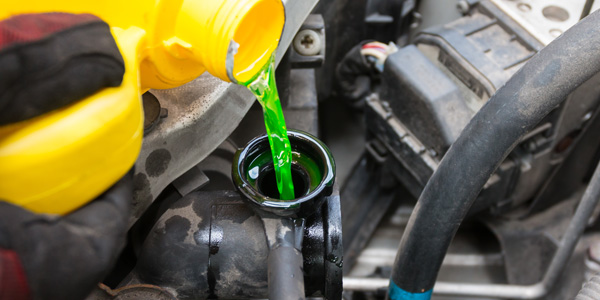
One of the best money-saving products that’s ever been invented is cooling system sealer. Most products will successfully seal minor coolant leaks to stop the loss of coolant that leads to engine overheating. Specially formulated “head gasket” sealers also can stop many head gasket leaks and save your customer thousands of dollars in expensive engine repairs. What’s more, coolant sealers also can be added to the coolant as a preventive measure to plug small leaks before they turn into big ones.
Coolant leaks can occur anywhere in the cooling system, including the water pump, hoses, radiator, heater core, thermostat housing, expansion plugs, head gasket, combustion chamber or cylinder block. Regardless of where a leak occurs, the end result is always the same: coolant loss that sooner or later allows the engine to overheat.
Overheating is bad news because excessive heat causes metal to expand beyond normal limits and clearances. The result can be piston scuffing, cylinder scoring, valve sticking, damaged valve guides and even warped cylinder heads. Overheating also can crush an otherwise good head gasket, causing the gasket to leak when the radiator is refilled with coolant.
Most cooling system sealers can seal small pinhole leaks in radiators and heater cores as well as hairline cracks where the core and end tanks are joined, and porosity leaks in aluminum cylinder heads and blocks. Products designed to seal more serious leaks also can delay or even eliminate the need to replace a head gasket or heater core (both of which are expensive labor-intensive repair jobs). Stopping a water pump shaft seal leak, however, or a large leak in a hose is beyond the capabilities of most products.
The key to selling cooling system sealers is to match the product with the leak your customer is trying to stop. And the keys to a successful repair are choosing the right product and then following the directions on the label.
Step one is to figure out what’s leaking. Is it the radiator, heater core, water pump or a bad hose? Head gasket leaks are harder to diagnose because leaks are usually internal rather then external. A mysterious loss of coolant with no puddles under the vehicle or obvious signs of leakage under the hood often indicates a leaking head gasket, or in some cases a leaky radiator pressure cap.
A head gasket leak can be confirmed by pressure-testing the cooling system, using a chemical test strip that detects the presence of combustion gases in the coolant, or by checking the dipstick for signs of coolant in the oil (yellowish gunk on the dipstick). Radiator caps also can be pressure-tested to see if the cap holds its rated pressure. If it can’t, replace the cap.
Sometimes, leaky hose connections can be fixed by simply tightening or replacing the clamp. But if a hose is dripping or spraying coolant, replacing the hose is the recommended repair. Same for a leaky water pump.
If a leak is something that a coolant sealer has a good chance of stopping, select a product that is formulated for that type of leak (read the label). Tell your customer to follow the directions for how the product should be used and what, if any, additional steps are recommended to ensure a successful seal.
In most cases, the sealer is added to the radiator or coolant reservoir. Makeup coolant then is added and the engine is started so the sealer and coolant can circulate until the leak stops. Additional coolant may be required after the engine has reached operating temperature and cooled back down.
Caution: Customers should be warned to NEVER open a radiator cap on a hot engine. Steam can blow out and cause serious burns. Wait until the engine has cooled before opening the cap.











